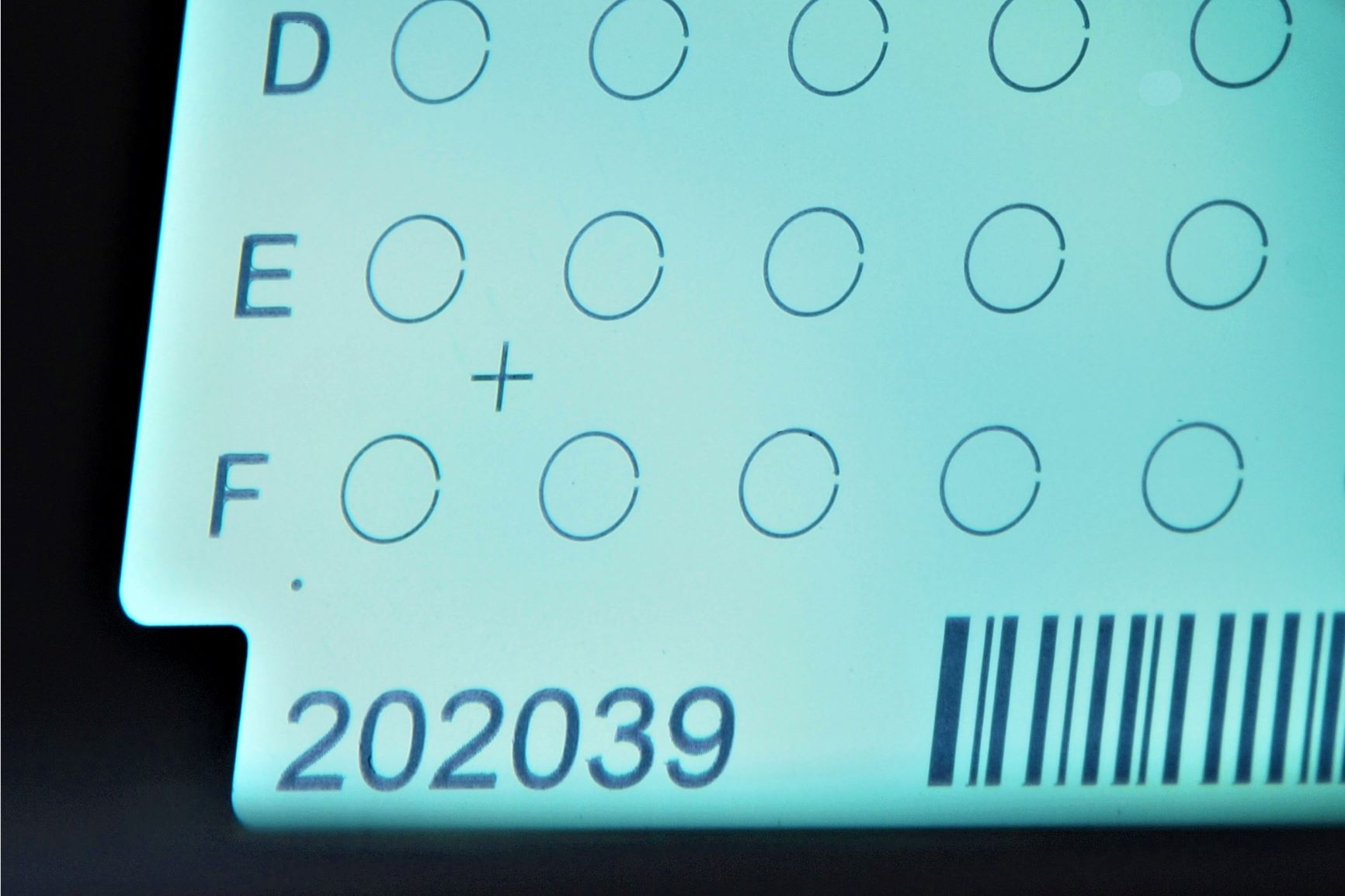Technical Details
Laser marking and its advantages:
- non-contact process
- wear-free, as no tools are required
- suitable for a wide range of materials
- high flexibility with very good reproducibility of consistent results
- markings can also be applied in hard-to-reach places, for example on scale rings
- ring, lateral and rotary axis marking possible thanks to round machining
- permanent marking, resistant to abrasion and chemicals
How does laser marking work?
Laser marking, for example, uses a pulsed laser beam to apply markings to various surfaces. The processed material is changed by the focused beam - for example in terms of color or structure. The decisive factors are:
- the laser wavelength,
- the duration of the pulse and
- the laser power density.
Labelling, marking, engraving - great processing versatility thanks to laser technology
Depending on the material and the project, we use different labelling processes:
-
Laser marking by ablation
Laser marking creates high-contrast lettering by removing layers of a specific base material. A contrast is created by color differences between the top layer and the base layer. The prerequisites for this type of laser marking are a homogeneous layer thickness, a high color contrast between the base material and the layer material and a good absorption capacity of the top layer. This process of layer-by-layer removal is also known as decoating.
-
Laser marking by deep engraving
Laser engraving involves the removal of volume from the material. In the process, the material surface is melted and vaporised by the laser. The resulting indentation can typically be up to several tenths of a millimeter deep. Markings of this type are mainly used for the flexible production of a tamper-proof direct component identification that is permanent under abrasion and corrosion stress.
-
Temper marking by discolouration
This process creates markings without material removal and without material throw-up. Instead, the heat effect of the laser beam is used to create an oxidation process underneath the material surface. Oxidation layers are created on the material surface. The result is the so-called colour change of the metal surface. It is suitable for laser marking of all metals that change colour when exposed to heat and oxygen, for example steels and titanium.
The advantages of annealing marking include the fact that surfaces that have already been finished can be marked or special sterilization requirements in medical technology can be implemented.
-
Laser marking of plastics
On the other hand foaming results in a light laser marking because the material is melted by the laser beam. In the process are tiny gas bubbles formed, which are permanently trapped during cooling and reflect the light diffusely. This is particularly suitable for dark surfaces.
The laser beam penetrates the surface of the plastic and causes a chemical change in the carbon-containing components, which leads to discoloration of the material. Depending on the chemical composition of the processed material, this reaction leads to different shades of color. The thermochemical reaction, known as carbonization, results in a dark colour change. -
Laser marking in medical technology
Laser marking plays a crucial role in medical technology, particularly in the marking of medical cutlery. This technology enables permanent, corrosion-resistant and precise marking, allowing medical instruments and implants to be individualized. The marking is done without physical contact, which preserves the integrity of the medical cutlery. This is particularly important when it comes to medical products that need to be sterilized regularly. Any DLC coatings and other PVD coatings on the instruments can also be marked by laser.
-
Other materials that are suitable for laser marking
Laser marking is a versatile method that can be applied to a wide range of materials. In addition to the materials already mentioned, such as aluminium, stainless steel and plastics, the following are also suitable for laser marking.
- Ceramics: Technical ceramics are well suited to laser marking. The precise nature of the laser process enables fine markings to be made on the surfaces of ceramics.
- Glass: This material can also be successfully laser marked. The method enables fine and permanent markings on glass surfaces.
- Copper: This is another metal that can be used for laser marking. The precision of the laser enables detailed markings on copper surfaces.
- Silicon: This is a semiconductor material that can also be marked with a laser. This is particularly relevant in the electronics industry, as silicon is used in the manufacture of semiconductor components.
- FR3, FR4, FR5: These materials, which are often used in the manufacture of printed circuit boards (PCBs), can be marked with the laser. Laser marking enables precise markings on PCB materials such as FR3, FR4 and FR5.
- Wafers: Wafers made of silicon or other materials are often used in the semiconductor industry. Laser marking can also be used here for marking and identification.
It is important to note that the suitability for laser marking depends on various factors, including the material compositionand the desired marking details.
Discover industrial laser marking and component marking
We create 2D codes such as data matrix codes (DMC) and QR codesor intricate graphics such as serial numbers - for example for type plates and much more - with the utmost precision according to your individual specifications. Laser marking is one of the fastest processes in laser technology.
Discover even more innovative technologies in the fields of mechanical processing, laser welding and more.
If you have any questions, we will be happy to help you.
![[Translate to English:] laserbeschrifteter Silizium-Wafer](/fileadmin/user_upload/Galerie/Leistungen/Technologien/Laserbeschriften/Silizium-Wafer_klein.png)




